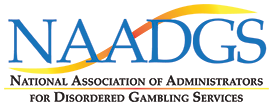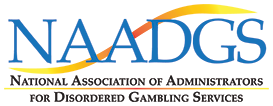Young adults and teenagers are facing an alarming crisis in the United States—gambling addiction. The landscape of gambling has transformed incredibly fast, using online platforms to attract a younger audience with advertising that capitalizes on their vulnerabilities. As the age of gamblers reaches it’s lowest levels, our nation is witnessing a significant rise in the number of helpline calls – the urgency to address this crisis has never been more pressing and requires research for new regulatory policies.
The digital age has not only revolutionized the way we communicate and access information but has also altered the dynamics of the gambling landscape to create a disturbing trend. Young people are drawn by the flashy online casinos and sports betting ads because advertisers are strategically targeting that age group, appealing to their impulsive nature that promises the thrill of risk-taking with a quick reward. The result is an increasing number of young kids falling prey to the addictive nature of gambling.
The neurological aspects of gambling addiction shed light on why young people are particularly susceptible to its allure. The brain’s reward system, primarily driven by the release of dopamine and endorphins is triggered during gambling activities. This neurochemical response creates a cycle of pleasure and reinforcement making it challenging for individuals, especially young developing minds, to resist the temptation of continuous play.
As the number of young gamblers continues to rise, so does the demand for support services. The Gen Zers who span from 11 to 26 years old are more comfortable asking for help then the older generations of problem gamblers which may account for the current uptick to helpline calls. But again, more research is needed.
The urgency of this situation has prompted calls for regulatory actions at both federal and state levels. While online sports betting is legal in some states, others struggle with the lucrative decision to follow suit. Lobbyists, advocating for the legalization of online sports betting are actively involved in state-by-state battles, intensifying the debate on the broader implications of such a move.
Regulatory actions to be considered:
- Advertising Restrictions: Implementing stricter regulations on gambling advertisements, especially those targeting younger demographics.
- Research Initiatives: Allocating resources for research initiatives to better understand the factors contributing to youth gambling addiction and to develop effective prevention and intervention strategies.
- Education Programs: Launching nationwide educational campaigns to raise awareness about the risks and consequences of gambling, with a focus on schools and youth organizations.
- Strengthening Age Verification: Creating new measures to restrict access to online gambling platforms for minors.
- Treatment and Support Services: Expanding treatment and support services for individuals struggling with gambling addiction, including increased funding for Gamblers Anonymous and helpline services.
- Public Awareness Campaigns: Launching public awareness campaigns to inform families about the risks of youth gambling and the importance of open communication within households.
This issue requires coordinated research with shared information from all problem gambling organizations. Academic institutions are currently conducting studies to understand the root causes and identify effective interventions for youth gambling addiction as well as organizations such as the National Council on Problem Gambling. Unfortunately this information is scattered and difficult to locate. NAADGS.org – the National Association of Administrators for Disordered Gambling Services, is championing to become a central hub of research information to provide a comprehensive repository in support of ongoing efforts to prevent problem gambling.
The crisis of gambling addiction among America’s youth demands immediate attention and concerted efforts from policymakers, regulators, educators, and families. As the landscape of gambling continues to evolve, strategies to protect the the vulnerable populations must also evolve. The United States stands at a critical juncture, requiring a collaborative approach to stop the rising tide of youth gambling addiction.


